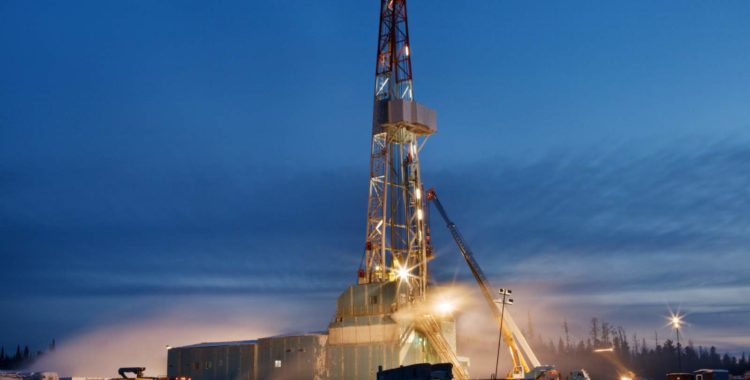Frac Hits: Horizontal and Vertical Well Interference
Horizontal wells have become an increasingly popular method of recovery in recent years, and with this uptick comes the increased potential for interference with existing vertical wells. Known as “frac hits,” collisions range from physical intrusion of fractures or fluids to drastic changes in pressure, either of which can result in serious damage or even complete destruction of a vertical well. (1) Frac hits are an increasingly common problem, especially in the Permian Basin, but the recourse for owners of damaged wells remains unclear in many states.
Operations in Oklahoma have been particularly affected, with one county reporting over 400 damaged wells alone. Oklahoma is one of the few states with case law which addresses the issue. In 2017, H&S Equipment, Inc. sued Felix Energy, L.L.C., subsequently purchased by Devon Energy Production Company, L.P. in the U.S. District Court for the Western District of Oklahoma, seeking recovery for damage to their vertical well based on claims of subsurface trespass, private nuisance, and negligence. (2) While the court held that the defendant was not negligent as a matter of law, the jury awarded H&S nearly a quarter million dollars for its trespass and nuisance claims.
In Texas, the law remains undeveloped in this area, but a few related issues are instructive. Historically, there is precedent for damages for destruction of a neighboring well. In Elliff v. Texon Drilling Co., a well operated by Texon blew out and the resulting fallout destroyed a well on the adjacent property. The Texas Supreme Court found that Texon acted negligently and awarded damages. But twenty years later, the Court ruled against a damaged neighbor where the claim involved trespass but found no negligence, relying heavily on the Railroad Commission’s prior approval of the operations.
In 2008, Coastal Oil v. Garza Energy Trust raised several tangential issues when a mineral owner sued Coastal Oil & Gas claiming that oil beneath their tract was being drained by fracking operations originating on an adjacent tract. The Texas Supreme Court held that the rule of capture precluded the mineral owner from recovering damages for lost minerals, and neatly sidestepped the broader issue of whether fractures or fracking fluids that cross property lines constitute trespass. However, the discussion did offer a few guideposts. First, that actionable trespass would require a demonstrable injury. Although the mineral owner’s only injury in that particular case was drainage, the opinion suggests that fracking operations causing other types of damage to neighboring tracts could yield a different result. Second, echoing previous opinions, the Court emphasized that the RRC’s approval of operations was a relevant factor.
This collection of case law leaves operators with a mixed bag. Under Eliff, operators found negligent should expect to be held responsible for damage to existing vertical wells. Absent negligence, the outcome is less certain. While Coastal seems to suggest that demonstrable injury, certainly present in a frac hit claim, could support a claim of trespass, the consistent show of deference to RRC-approved operations plants a seed of doubt. Further, trespass requires a physical invasion. While fluids and even fractures may arguably qualify, frac hits resulting from pressure changes may be less convincing.
Aside from trespass claims, causes of action under Texas’ Natural Resources Code have similar standards. Under §85, a cause of action for damage to oil and gas production requires violation of an RRC rule or a showing of negligence. Where neighboring drillers have complied with RRC requirements and act as reasonably prudent operators, there are no guarantees of recovery.
Like its neighbors, New Mexico lacks extensive law directly addressing the issue. Some guidance may be derived from a 1990 case involving saltwater injections. The New Mexico Supreme Court found that in that instance that the injected saltwater did not migrate to a neighboring tract, but the justices took the opportunity to speculate on the issue of subsurface trespass. With less deference to their state commission than Texas courts have displayed, the justices clarified that commission approval “does not authorize trespass…nor does such license immunize the licensee from liability for negligence or nuisance…” Accordingly, we may expect New Mexico to offer less protection to operators based on state commission approval. Otherwise, weight given to negligence and what specifically constitutes subsurface trespass remain unclear in the state.
As spacing requirements shrink and more wells are built on known pockets of reserves, frac hits seem likely to be a persistent issue. Prevention may be preferable to messy and unpredictable post-damage litigation. For example, Colorado has implemented rules requiring operators to notify others nearby at least 90 days before fracking begins. There is a new market for mitigation practices emerging, and notice to potentially affected operators would allow for those safeguards to be implemented before fracking begins. Even as case law continues to develop, operators may find prevention a better investment than litigation.
Kuiper Law Firm, PLLC specializes in oil and gas; if you have any questions about how the information in this article may affect you or your operations, do not hesitate to contact us.
______________________________________________________
- Joseph A. Schremmer, Getting Past Possession: Subsurface Property Disputes as Nuisances, 95 Washington Law Review 315 (2020).
- H & S Equipment, Inc. v. Devon Energy Production Company, L.P. by Felix Energy, L.L.C., 2017 WL 5760122 (W.D.Okla., 2017).

